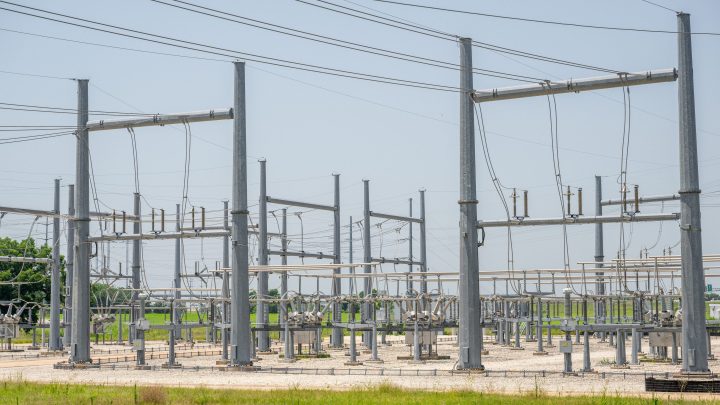
Risk of electricity shortages rises with extreme heat waves
Risk of electricity shortages rises with extreme heat waves

It’s very hot across Texas and much of the southern United States right now, and it has been for days. That heat is now spreading to the north and east.
Texas broke a record for energy use Tuesday, and it may do the same Wednesday, according to the Electric Reliability Council of Texas, or ERCOT, which operates the state’s grid. So far, it’s holding up well.
But a new analysis from the North American Electric Reliability Corp. finds that two-thirds of the country, including Texas, is at risk of being unable to meet electricity demand this summer during extreme heat waves or other weather events.
We all know that summers in Texas are hot, but it’s been unusually hot for June, said Daniel Cohan at Rice University in Houston.
“It’s been hitting around 100 every day for most of the past couple weeks,” Cohan said.
And Texans have been using a record amount of electricity to get through it — largely for air conditioning.
“That’s what we’d expect when a heat wave comes through in a state where the economy is continuing to grow and more and more people and industries and data centers are moving to our state,” he said.
But Texas’ grid is built for summer, Cohan said, and in the last five years it’s added a lot of solar power. “That’s been a game changer. When we have heat waves, it’s sunny,” he added.
Most grids around the country are in pretty good shape to handle normal summer peaks, said Mark Olson at the North American Electric Reliability Corp.
“However, when conditions are more challenging than your average summer, a number of areas could face electricity supply shortages,” Olson said.
“More challenging” could mean an intense heat dome in, say, the Pacific Northwest, which isn’t used to triple-digit temperatures.
“These are kind of the severe events that are particularly challenging for the power grid because they can not only force some generators offline at higher rates, but also make it more challenging to transfer electricity supplies from neighboring areas,” Olson explained.
It’s even more difficult right now because grids are in transition, trying to move away from coal and natural gas and toward renewables.
The question is, “can we build new resources fast enough to compensate for decommissioning of existing resources and to handle elevated peak loads on the grid due to intensifying extreme weather events?” said Brian Tarroja at the University of California, Irvine.
A lot of renewable projects are being built now, and there’s billions in federal funding for them. But, “it’s become harder and harder to build things like transmission. It’s becoming harder and harder to site infrastructure to build,” said Joshua Rhodes at the University of Texas at Austin. Permitting is one big obstacle, he added, and so is community opposition to new projects.
“The old environmental movement was about stopping things from getting built — stopping chemical plants, stopping nuclear facilities. … The new environmental movement needs to be about building things,” Rhodes said.
Things like new solar and wind farms and transmission lines to connect them to the grid.
There’s a lot happening in the world. Through it all, Marketplace is here for you.
You rely on Marketplace to break down the world’s events and tell you how it affects you in a fact-based, approachable way. We rely on your financial support to keep making that possible.
Your donation today powers the independent journalism that you rely on. For just $5/month, you can help sustain Marketplace so we can keep reporting on the things that matter to you.












